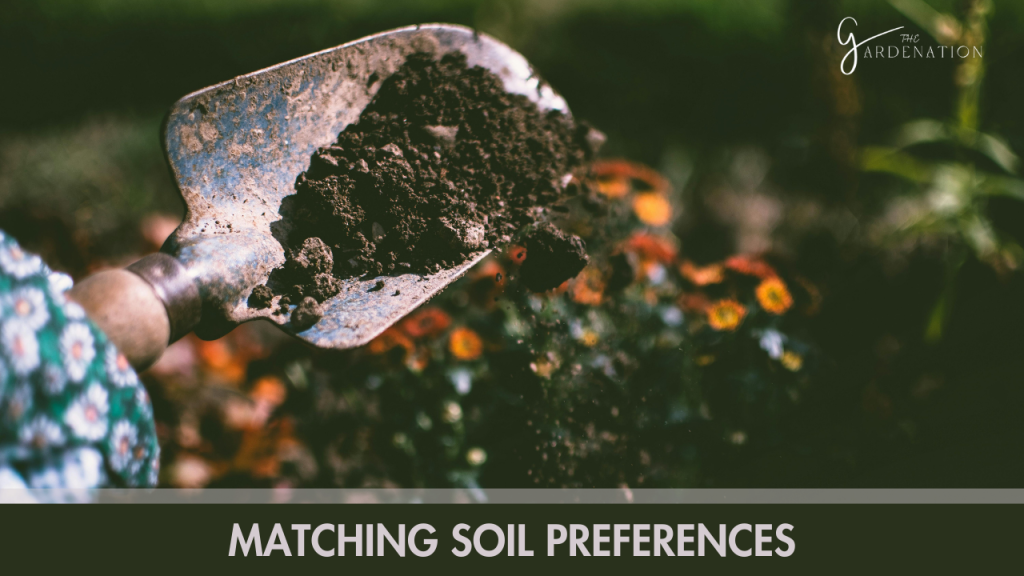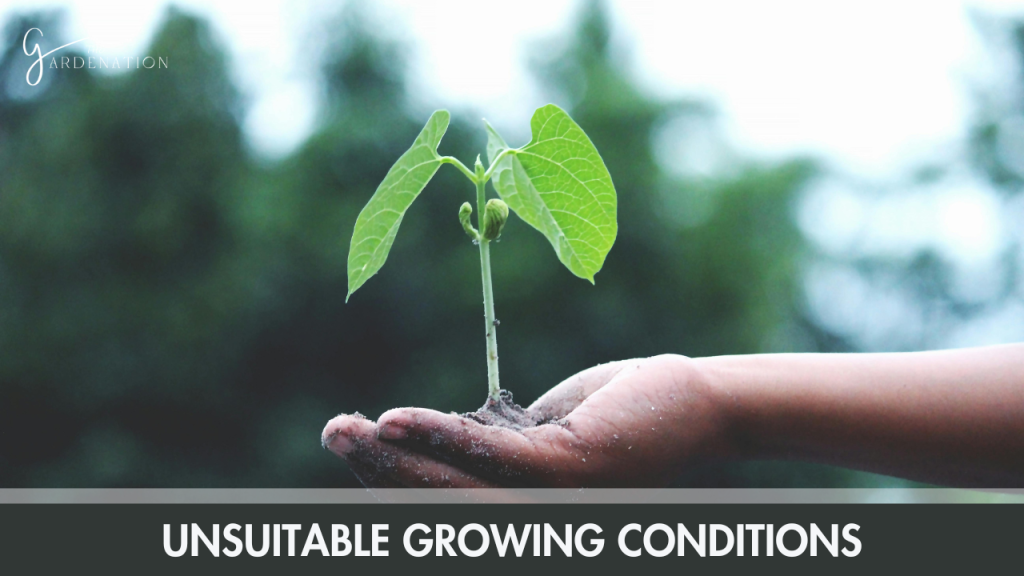Companion Plants For Oakleaf Hydrangeas
Embark on a journey to enhance the beauty and vitality of your garden by exploring the world of companion plants for Oakleaf hydrangeas (Hydrangea quercifolia). In this guide, we delve into the art and science of companion planting, sharing insights on the historical roots of this practice and its numerous benefits. Discover how strategically selecting companion plants can create a harmonious environment, promoting pest control, improved soil health, and increased yields for your Oakleaf hydrangeas and also learn what to plant with oakleaf hydrangea.
Understanding Companion Planting
Historical Overview of Companion Planting
The origins of companion planting can be traced back thousands of years to indigenous cultures across the world. Ancient civilizations observed nature and the symbiotic relationships between plants, realizing certain plant pairings had mutually beneficial effects. Over generations of trial and error, traditional companion planting wisdom was passed down and refined for optimal plant growth.
In more recent centuries, companion planting was widely adopted by cottagers and peasants in cottage gardens and allotments. They recognized the value of planting useful crops alongside flowers and herbs that deterred pests, attracted pollinators, and enriched the soil.
Evolution of Companion Planting Practices
While companion planting historically relied on observation and folklore, our understanding has greatly evolved in modern times. Contemporary research has uncovered the scientific mechanisms underpinning successful companion planting through in-depth studies of plant biochemistry and soil microbiology. This has allowed us to better understand the intricate ecosystems in our gardens and leverage companion plants’ natural abilities to protect and nourish desired plants.
And with the growth of organic gardening and permaculture, companion planting has seen resurgence as gardeners recognize its efficacy and sustainability compared to conventional pesticides and fertilizers. Companion planting is now a cornerstone practice for gardeners seeking to garden in harmony with nature.
Scientific Basis
At its core, companion planting seeks to recreate the biodiverse ecosystems found in nature within our gardens. By strategically assembling plants with complementary characteristics, companion planting allows plants to benefit from symbiotic relationships that evolve in the wild.
For example, pairing plants that enrich soil with nutrients with those needing nutrient-rich soils creates a closed loop recycling system. And interplanting flowers with vegetables and fruits attracts predatory insects that keep herbivorous pests in check. This biomimicry allows our gardens to function as self-contained ecosystems where each plant contributes to the success of the whole.
Companion Plants of Oakleaf Hydrangeas
Getting the spacing right is key to effective companion planting with Oakleaf hydrangeas. As a general rule of thumb, flowering companion plants can be clustered fairly close, around 12 to 18 inches from Oakleaf hydrangea shrubs. This allows visiting pollinators easy access to all bloom.
Small herb companions can also grow at the base of hydrangea shrubs as groundcovers. For larger shrubs and trees, allow about 5 feet of space around mature size Oakleaf hydrangeas to prevent crowding and competition. And consider the scale of each plant, allowing small flowers to intermingle while keeping sprawling plants separate.
For more information about Houseplants you can visit: Companion Plants For Yarrow
Best Companion Plants for Oakleaf Hydrangeas

Here are some excellent candidates for Oakleaf hydrangea companion plants based on their mutually beneficial characteristics:
Trees, Shrubs and Flowering Plants
Shade Trees

Japanese maples, dogwoods, and tulip poplars make excellent backdrop trees to spotlight Oakleaf hydrangeas. Their dappled shade protects hydrangeas while their brilliant fall color complements fading hydrangea blooms.
Shrubs

Lower growing shrubs like barberry, dwarf burning bushes, and boxwood make great companions. They enrich soils, provide pest protection, and contrast nicely with Oakleaf hydrangea’s bold leaves.
Herbaceous Plants

Tuck lower growing herbs, flowers and groundcovers around Oakleaf hydrangeas. Parsley, cilantro, lemon balm, basil, heuchera, coleus, scented geraniums, and sweet potato vine all do well under open-canopied shrubs. The herbs deter pests while the flowers attract pollinators.
Berry Bushes

Blueberry, raspberry, boysenberry and blackberry bushes make ideal Oakleaf hydrangea companions. They suit acidic, organically enriched soils and their spring blooms entice pollinators to also visit hydrangea blooms. Their fall fruits also make a beautiful seasonal display with the hydrangeas’ fall foliage.
Matching Soil Preferences

Berry bushes thrive in the same organically enriched, acidic soils Oakleaf hydrangeas prefer. Amending their shared soil benefits both deeply rooted plants.
Enhancing Appearance
While berry bushes offer spring flowers and summer fruit, Oakleaf hydrangeas provide captivating flowers in summer before turning a tapestry of fiery fall foliage. This extended seasonal interest makes them perfect partners in the garden.
Bad Companion Plants for Oakleaf Hydrangeas
While many plants pair nicely with Oakleaf hydrangeas, some common landscape plants make poor companions. Here is what to avoid:
Unsuitable Growing Conditions

Any plants unsuited to Oakleaf hydrangea’s moisture preferences, soil chemistry and hardiness zone will compete poorly. Magnolias, lilacs, fruit trees, spirea and more may suffer alongside hydrangeas.
Oversized Plants

Large trees and shrubs like crepe myrtles easily overshadow smaller Oakleaf hydrangeas, starving them of light. Their roots also dominate soil space and nutrient access.
Differing Requirements

Plants requiring very different care than Oakleaf hydrangeas often make poor companions. Rosemary, lavender, sage and thyme prefer hot, dry, alkaline soils with excellent drainage unlike hydrangeas. And moisture-loving ferns, hostas and hellebores outcompete hydrangeas.
Creating harmonious plant communities requires choosing members with similar environmental needs and growth habits. This allows the plants to not only coexist, but actively benefit each other.
Benefits of Companion Planting for Oakleaf Hydrangeas

Pest Control Mechanisms
Strategic companion planting allows gardeners to control pests without resorting to harmful pesticides. Certain plants naturally deter or trap insect pests, while others attract beneficial predators to keep herbivores in check.
Beneficial Predators
Planting pollinator-friendly flowering herbs and annuals will attract beneficial insects to your garden. Ladybugs, praying mantises, ground beetles, and spiders all prey on troublesome pests for Oakleaf hydrangeas, especially aphids and caterpillars.
Deterring Harmful Pests
Strongly scented flowering herbs like parsley, cilantro, lemon balm and basil can disguise the scent of Oakleaf hydrangeas, deterring pests like Japanese beetles. Spiky plants like barberry bushes and burning bushes can deter crawling pests.
Improved Soil Health
Companion planting encourages overall soil health through organic pest control and plant diversity, enriching the soil food web.
Organic Pest Control
By reducing pests with companion plants instead of pesticides, beneficial microbial life in the soil ecosystem can thrive undisturbed. These microbes are critical for releasing nutrients to plant roots.
Microbial Communities
The roots of companion plants feed diverse communities of bacteria, fungi, protozoa, and nematodes in the soil. These microbes break down organic matter, cycling nutrients to plant roots. Some even fix atmospheric nitrogen.
Nitrogen Fixation
Certain companion plants like clover enrich soils by hosting Rhizobium bacteria on their roots which convert nitrogen gas into bioavailable nitrogen compounds that plants can use. This reduces the need for nitrogen fertilizers.
Increased Yields
Thoughtfully selected companion plants create optimal growing conditions for Oakleaf hydrangeas, supporting more prolific blooms.
Robust Growth
By enriching soils with organic matter and nutrients, companion plants allow Oakleaf hydrangea roots to grow strong and deep to support lush vegetative growth.
Abundant Flowers
With pest pressure reduced by beneficial insect habitat and the added nutrients from companion plants, Oakleaf hydrangeas can devote more energy into forming abundant flower buds.
Beneficial Pollinators
Companion plants also attract more pollinators like butterflies and bees to transfer pollen between Oakleaf hydrangea blooms, improving fruit and seed set.
Considerations When Selecting Companion Plants
While the benefits of companion planting are plentiful, careful consideration when selecting plant pairings is imperative for success.
Hardiness Zone
Choose companion plants suited to the same USDA hardiness zone and environment as the Oakleaf hydrangea variety you are growing. Site conditions like sunlight, drainage, wind exposure, and irrigation need to align.
Mature Size and Growth Habits
Allow enough space for both the Oakleaf hydrangea and companion plant’s mature size. Sprawling, vining plants can overtake shrubs if given too much room. But cramped quarters will create unhealthy competition.
Also ensure growth habits are compatible. Pairing tidy, compact plants allows each to shine. Mixing rambling vines and plants requiring frequent pruning complicates maintenance.
Light, Water and Nutrient Requirements
Providing the proper growing conditions is key. Most hydrangeas thrive in dappled sun or part shade with consistent moisture. Ensure companion plants share these needs so no plants struggle.
And consider nutrient needs. Pairing heavy feeding plants with lighter feeders creates imbalance. Match plants with similar fertilizer requirements.
Growth Rate and Maintenance Levels
Choose companion plants that grow at a similar vigorous pace to Oakleaf hydrangeas to prevent one plant from overshadowing or stunting its neighbor.
And opt for companions with comparable maintenance needs. Keeping fastidious plants together and lower maintenance plants together streamlines garden care.
Planning Your Companion Planting Layout

Designing for Optimal Compatibility
Group plants with complementary characteristics in purposeful vignettes for both aesthetics and plant health. For example, place moisture loving hydrangeas, ferns and astilbes together in the shadier, damper areas of your garden. And mass herbs, bee balm and butterfly bushes that thrive in hot sun and drier soils in the brightest beds.
Maximizing Appearance
Be sure to curate interesting contrasts in shapes, sizes, colors and textures as you choose companion plants. Contrast fine, feathery foliage against large, glossy leaves or pair airy panicles of flowers with dense, rounded forms. And consider sequential bloom times for non-stop color.
Year-Round Interest
To keep your garden lively beyond the growing season, incorporate plants with showy autumn foliage, striking bark and evergreen boughs. The Oakleaf hydrangea’s fiery fall color is perfectly complemented by the crimson leaves of dwarf Japanese maples. Dogwoods offer crimson-hued bark for winter appeal. And boxwood retains its verdant hue in winter.
Case Studies
Backyard Wildlife Sanctuary
Amanda S. transformed her suburban backyard into a wildlife sanctuary using Oakleaf hydrangeas underplanted with insectary plants and berry bushes. The flowering herbs and annuals attract beneficial insects and pollinators while blueberry and blackberry bushes provide shelter and food for birds. Amanda’s garden has become a haven for local fauna while keeping pests at bay.
Cottage Garden Revival
James R. brought his grandmother’s cottage garden back to life using her original Oakleaf hydrangeas as a foundation. He underplanted them with easy-care perennials like coral bells, lavender, and catmint which deter rabbits. Shade tolerant groundcovers blanket the soil to suppress weeds. The revived garden remains lush and bloom-filled while needing little care, just as his grandmother kept it.
Beyond Companion Planting: Oakleaf Hydrangeas in Ecosystem Gardening

While companion planting considers plant interactions in pairs, ecosystem gardening examines plants as interconnected communities. Using concepts from nature’s ecosystems, we can create highly functional gardens by assembling plant guilds.
Integrating into Permaculture
Permaculture designs landscapes modeled after woodland ecosystems with plants filling every niche. Oakleaf hydrangeas can be incorporated as understory mid-level shrubs. Paired with overstory canopy trees, underplanted herbs and groundcovers, the hydrangeas become part of a self-sustaining plant community.
Creating Biodiverse Ecosystems
Expanding beyond companion planting to build plant guilds creates an ecologically diverse ecosystem. Each plant fulfills roles like soil building, nutrient cycling, beneficial insect habitat, dynamic seasonal displays, food production, and more. Oakleaf hydrangeas offer flowers for pollinators and fall color interest.
Sustainable Gardening
By gardening in harmony with nature, choosing plants suited to the environment reduces external inputs like fertilizer, pesticides, and excessive watering. Allowing plants to give and receive benefits from their plant neighbors sustains healthy growth naturally. The dense leaves of Oakleaf hydrangeas even help suppress weeds and build organic matter.
Conclusion
Thoughtfully selecting companion plants for Oakleaf hydrangeas allows us to cultivate beauty and abundance organically. By understanding plant partnerships that deter pests, enrich soils, share resources, and attract pollinators, we can create harmonious plant communities.
The case studies and expert insights shared here illustrate the real-world success gardeners have found using companion planting wisdom to help hydrangeas thrive. And the principles of companion planting translate broadly to nurturing many plants beyond just Oakleaf hydrangeas.
By gardening in harmony with nature, we embark on a journey of curiosity, discovery and stewardship. Companion planting allows us to embrace the beauty and interconnectedness of the ecosystems in our backyards.
Frequently Asked Questions
What are the best companion plants for Oakleaf hydrangeas?
Some excellent Oakleaf hydrangea companions are Japanese maples, dogwoods, barberry, boxwoods, herbs like lemon balm and cilantro, pollinator-friendly flowers, blueberry and blackberry bushes and shade-loving ground covers like hostas.
Where should companion plants be placed in relation to Oakleaf hydrangeas?
Place small flowering companion plants around 12-18 inches from Oakleaf hydrangeas to attract pollinators to both plants. Herbaceous plants make great groundcovers underneath the shrubs. Allow at least 5 feet between mature Oakleaf hydrangeas and larger companion shrubs and trees.
What plants should be avoided around Oakleaf hydrangeas?
Avoid planting Oakleaf hydrangeas near large trees and shrubs like crepe myrtles and magnolias that will compete for light and nutrients. Also refrain from rosemary, lavender, sages and other plants with very different soil moisture and nutrient requirements than hydrangeas.
Can vegetables and herbs be planted as Oakleaf hydrangea companions?
Yes! Many herbs thrive planted around Oakleaf hydrangeas. Parsley, cilantro, basil and lemon balm help confuse pests, enriching soil as they decay. Garlic and chives also deter deer and rabbits. Just be sure companion edibles match the soil moisture and nutrient requirements of hydrangeas.
How can I design an ornamental garden featuring Oakleaf hydrangeas?
Use Oakleaf hydrangeas as an anchor shrub or focal point. Underplant with lower growing perennials like astilbe, coral bells and ferns for contrasting textures and colors. Include deciduous and evergreen shrubs for year-round structure and berries for fall/winter interest. Annuals add pops of color.
Citations
- https://www.homesandgardens.com/gardens/what-to-plant-with-hydrangeas (Griffiths, 2022)
- https://www.gardenia.net/genus/hydrangea-quercifolia (Oak Leaf Hydrangea (Hydrangea Quercifolia), n.d.)
- https://www.homefortheharvest.com/what-to-plant-with-oakleaf-hydrangea/ (Duford, 2023)
- https://blog.greatgardenplants.com/companion-plants-for-hydrangeas/ (Griffith, 2023)
- https://www.lorraineballato.com/hydrangea-companion-plants/ (Ballato, 2022)


One Comment